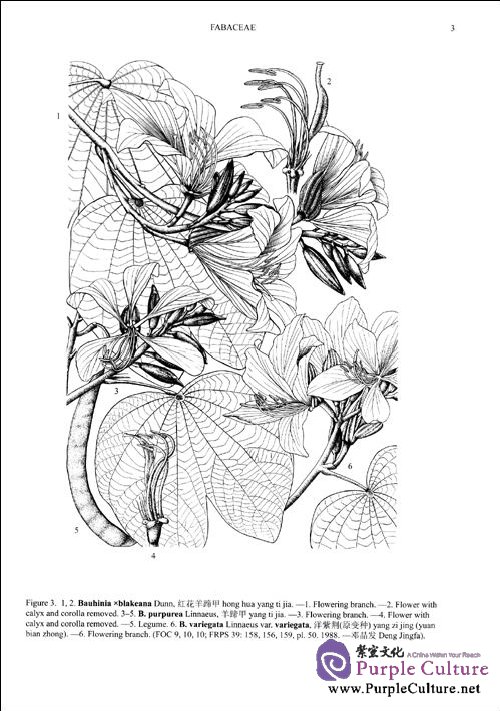- Author:
Wu Zhengyi;
- Language: English
- Page: 680
- Publication Date:
10/2011
- ISBN: 9787030282552
- Publisher: Science Press
Details
Media Recommendation
"...a landmark series of volumes."
—— Economic Botany
"...a must for any student of the temperate and subtropical flora of such a vast, species-rich country..."
—— Kew Bulletin
"...an indispensable tool for identifying Chinese plants..."
——Systematic Botany
Editor's Recommendation
Flora of China,Wu Zhengyi and Peter H. Raven,
co-chairs of the editorial committee. Hong Deyuan, vice co-chair of the
editorial committee The Chinese flora, with an estimated 31,500
species,is of immense scientific and horticultural
importance,Noteworthy, too, is Chinese traditional medicine,which is
based on the remarkable plant resources of thecountry. Descriptions and
identification keys for this diverse flora, until now unavailable in
English, havebeen published over the past 18 years in the Flora of
China, in conjunction with a separate series, the Floraof China
Illustrations. Thirty-seven of the total of48 text and illustrations
volumes have already beenpublished, thanks to an unprecedented and
long-standing collaboration between Western and Chinese
scientists.Volume 10 of the illustrations series encompasses onelarge
plant family, namely, the Fabaceae or Leguminosae,with 1,673 species in
China, of which 690 are endemic.The fruits come in the form of legumes,
from the Latinword for pod. The green bean(Phaseolus vulgaris),chickpea
(Cicer arietinum), and soybean(Glycine max)have legumes containing
seeds, also called pulses, thatare of great agricultural and economic
value. Beans area staple of traditional Chinese cuisine.
Clover(Trifoliumrepens)and lucerne(Medicago sativa)are used aroundthe
world for feeding livestock; when ploughed into thesoil they act as
fertilizers because of the atmosphericnitrogen fixed by the nodules in
their roots. Among theornamentals from this family native to China, the
goldenshower tree (Cassia fistula)is from a genus that haslong been
known there. Around the early ninth century,poet Li Ho wrote of its rich
fragrance and, a fewdecades later, poet P i Jih-hsiu described dwarf
cassiasas sporting leaves "the size of fists."
Sample Pages Preview



